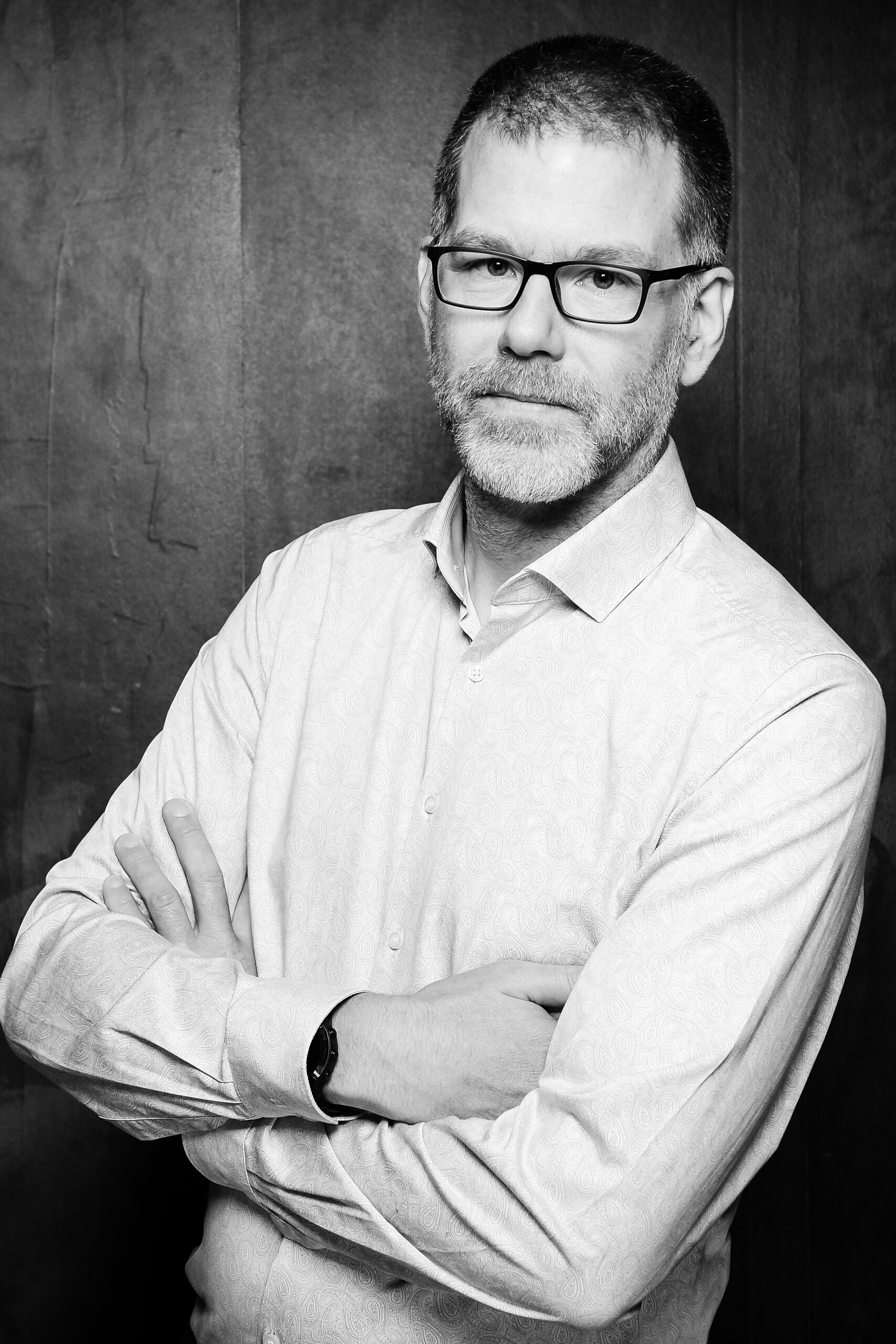Prof. Dr. Christopher van Eldik
Prof. Dr. Christopher van Eldik
Research
Gamma-ray astronomy with H.E.S.S., CTA and SWGO
I am working with the H.E.S.S. instrument, the currently leading experiment for very-high-energy gamma-ray astronomy. H.E.S.S. is an array of five imaging atmospheric Cherenkov telescopes and is located in the Khomas Highlands of Namibia. H.E.S.S. detects gamma-rays with an energy of larger than 50 GeV: although the atmosphere of the earth is opaque to photons of such high energy, they can be detected from ground because when absorbed in the atmosphere gamma-rays produce Cherenkov light. With 100 square-metre mirrors on the four small H.E.S.S. telescopes and the 600 square-metre mirror of the large H.E.S.S. telescope, this Cherenkov light is collected and recorded by very sensitive cameras.
Gamma-ray astronomy explores the sky with photons of energies at least a million times higher than the energy of visible light. As opposed to the photons of visible light, which are mainly emitted by the hot surfaces of stars, photons of gamma-ray energies cannot be produced by thermal processes. There is simply no celestial body hot enough to emit photons of gamma-ray energies. Instead, acceleration processes are believed to be taking place in some of the most violent places of the universe, such as in active galactic nuclei or remnants of star explosions. Charged particles like electrons, positrons, protons or atomic nuclei are believed to be accelerated in such sources to very high energies.
Gamma-ray astronomy is a most valuable tool to make the sites of acceleration visible and to study the physics processes that take place in these sources. On their way to earth charged particles get significantly deflected by the galactic magnetic field, and therefore do not point back to their production origin. Instead, neutral gamma-rays, produced in interactions of the accelerated particles with magnetic fields, photons, or intergalactic gas, travel on a straight path to earth. Therefore, their direction of origin points back to where they got produced, which is often close to the accelerators of the charged particles.
The Cherenkov Telescope Array CTA will become the successor of the currently operating ground-based gamma-ray instruments. With about 150 telescopes, it will allow for a 10 times better sensitivity to gamma rays as H.E.S.S. at TeV energies, while extending the energy coverage to a range starting from several 10 GeV to more than 100 TeV.
Bachelor and Master Thesis projects
If you are interested in working in our group on hardware, software or analysis-related opportunities, please get in contact with me.
Proposals for Bachelor’s and Master’s thesis topics (last update: 06/2023)
Academic Background
since 09/2011
Professor for Experimental Physics at Friedrich-Alexander-Universität Erlangen-Nürnberg (FAU)
10/2010-02/2011
Visiting Professor at Friedrich-Alexander-Universität Erlangen-Nürnberg
01/2005-08/2011
Postdoctoral Research Associate at MPI für Kernphysik, Heidelberg, Germany
01/2000-12/2004
Postdoc and PhD studies at DESY, Hamburg, Germany, and Dortmund University, Dortmund, Germany
Academic Community Work
Mentor in the Ariadne Mentoring Program of the FAU
Dean of Study Affairs of the Physics Department (FAU)
Executive Board member of the Physics Department (FAU)
Executive Board member of the Institute of Physics (FAU)
Executive Board member of ECAP
Scientific Community Work
Reviewer and Tutor for the Alexander von Humboldt Foundation
Reviewer for the Deutsche Forschungsgemeinschaft
Editor of Proc. Sci. Texas 2010 Symposium
Referee for Astroparticle Physics
Referee for The Astrophysical Journal
Referee for Nuclear Instruments and Methods A
Co-Organiser of the Gamma 2008 symposium
Co-Organiser of the Texas 2010 symposium
Co-Organiser of the IAU symposium SED 2011
Co-Organiser of the HAP Workshop Non-thermal Universe
Co-Organiser of the International School for Astroparticle Physics
Current Projects
Very High Energy Gamma-Ray Astronomy with the H.E.S.S. Instrument
Member of the H.E.S.S. Collaboration
Interests
- Gamma-ray emission from the Galactic Centre region
- Hunt for the sources of (Galactic) Cosmic Rays
- Search for gamma-ray signals from Dark Matter annihilations
- Machine learning techniques for gamma-ray analysis
- Statistical methods in (astro-)particle physics
Duties
- Deputy Director of H.E.S.S. (2016-2019)
- Member of the H.E.S.S. Executive Board (2013-2019)
- Member of the H.E.S.S. Observation Time Allocation Committee (2013-2019)
- Member of the H.E.S.S. Collaboration Board (since 2011)
- Convener of the H.E.S.S. Analysis and Reconstruction Working Group (2013-2016)
Design and Preparation of the CTA Observatory
Member of the CTA Consortium
Interests
- Hunt for the sources of (Galactic) Cosmic Rays
- Gamma-ray astrophysics of the Galactic Centre region
- Searches for Dark Matter in the Galactic Centre Halo
Commitments
- Development of a compact mass testing facility for CTA mirror tiles
- Development of a system to calibrate the MST telescope pointing
Design and Preparation of the SWGO Observatory
Member of the SWGO Collaboration



